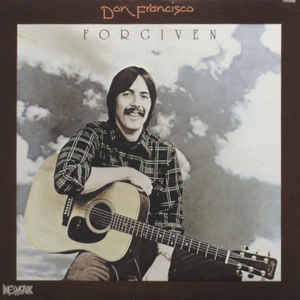This is mark Joseph “young” blog entry #324, on the subject of CCM Ladies of the Eighties.
The number of people in Contemporary Christian and Christian Rock music back in the early eighties didn’t seem all that large, but as I’ve been working through those I remember I perceive that it will take a long time to get through even all those I think worth mentioning. Thus I decided to do some conglomerate entries, naming and briefly recalling many who probably deserve more attention than I am offering but not from me. There are a lot, and this article will be substantial because of that, but we’ll break them up, ladies first.

We featured Evie Tornquist Karlsson when we wrote about Ralph Carmichael, as her version of Pass It On (linked there) probably made the Kurt Kaiser song famous. Evie is one of several female vocalists whose career began when she was single who then married, kept the maiden name in the middle and added the married name. Her first album, Everything Is Beautiful, had its US release in 1971 when she was fourteen years old, then was released in Norway two years later; she had four releases in 2007, but they appear to be compilations released in Norway. She did mostly middle-of-the-road covers of contemporary hits from many artists, but also had a substantial Norwegian career. Her husband was a Norwegian singer-songwriter. I remember her for Give them All; my wife won’t take me to the local shopping center for fear I might break out singing Give the mall to Jesus.
Sandi Patty, sometimes Sandy, sometimes Patti, is another contemporary MOR vocalist who did mostly covers, but did them well. I once characterized her as the Linda Rondstadt of Christian music–great range, fabulous voice with soaring highs, could have sung opera or pretty much anything she wanted. This early live rendition of How Majestic Is Your Name demonstrates some of her talent.
Twila Paris came from one of those family gospel singing groups, and recorded her first album, Little Twila Paris, in 1965 when she was about seven years old. She did not record another one until 1980. She received numerous awards over the course of her career, but I confess I know her name but do not remember a single album or song.
Lilly Green was a singer-songwriter whose third and final album, I Am Blessed, was the only one I ever heard–but the fourth song, Crucify Him (this video has a bit of dead air at the beginning) quickly became a favorite.
Micki Fuhrman‘s third and final album, Look Again, came out in 1981, and I found a favorite song on it as well–so much so that decades later when I saw a cassette copy of the album I bought it to listen in my car. The song is entitled I Stick With Winners, and is a clever take on why faithfulness. There were several other good songs on that disc, but I’ve got a lot of girls to cover here.
Looking over Cynthia Clawson‘s discography I recognize nothing but one song, on an album I never saw–but I know it was released to radio stations as a single, under the title Take Us Home for Christmas, and it’s a wonderful Christmas song which at the time was something new and different. I remember it decades later as one of those new Christmas songs that were worth the vinyl.
On that same subject, Pamela Deuel Hart made Always Christmas the title song of what appears to be her debut album, an otherwise undistinguished collection of familiar Christmas music. Regrettably, this song, which recalls a notion from The Lion, the Witch, and the Wardrobe, that it was always winter but never Christmas until He turned her life around so it is always Christmas and never winter, does not appear on a web search for videos. She released several more albums, but I never heard any of them.
Kelly Willard was one of those artists whose name came into my head but to whom I could make no connection–until I looked up her discography and immediately recognized the title song of her debut album, Blame It On the One I Love, a light jazz-influenced contemporary hit. Kelly is also known for a duet she did with the previously-covered Paul Clark, Woman…The Man That I Love.
Karen Lafferty released a few albums through Maranatha Music, but her best known song is not on any of them. Rather, Seek Ye First appears in several multi-artist collections focused on worship music. I remember it well, because it was used by one of our local ministries as the opening theme of their radio show. It was one of the first popular songs in the worship music genre, at a time when evangelistic songs were still preferred but slowly fading and a lot of Christian music was moving toward exhortation.
Jamie Owens released two albums under her maiden name, Laughter In Your Soul and Growing Pains. The latter included the song The Victor, which Keith Green heard and recorded, pushing Jamie to success in the field as the song was picked up by The Second Chapter of Acts and became a standard. Then she married her producer Dan Collins as they were working on her album Love Eyes. It, and all her subsequent albums, was released under her name Jamie Owens Collins. During that time, she managed to write the song Daniel which appears on the album, and to produce it herself without his knowledge, and then arrange for the recording to be played when she walked down the aisle at their wedding. Unfortunately, no video version of the song was found online.
There were a few albums in our radio collection by Janny Grein, and I recognize the covers for Free Indeed, Covenant Woman, He Made Me Worthy, and Think On These Things–what I don’t recognize is any of the song titles, but I do recognize that she was a Christian folk artist with a long career.
I remember Kathy Troccoli every time I hear another New York-style huge voice alto (think Bette Midler). The chorus of the title song of her debut album Stubborn Love has stayed with me all these decades, with its lush broadway-style production and her powerful voice coupled with the uplifting message–if you’re not listening to all the linked songs in this article, you probably do want to listen to this one.
Every time I hear the name of Casting Crowns lead vocalist Mark Hall, I wonder if he’s possibly the son of a girl for whom we had two albums. The first must have been Flying, because it’s the only album listed under her maiden name, Pam Mark, but by the time she released her second album, This Is Not a Dream, she was Pam Mark Hall. I don’t remember any titles from either of those albums, but her album Never Fades Away has a familiar look and sound, with several familiar song titles on it. These include Little Miss Much Afraid (with what sounds like Fireworks‘ Marty McCall supporting vocals), Lord of the Starfields, and others not available on video.
I recognize enough Reba Rambo album covers that we must have had a stack of them at the station, including her first, the 1969 release Reality, although I recall no titles from that. She was more of a contemporary southern gospel artist, but borderline. I remember the standard He Looked Beyond My Fault (And Saw My Need) from 1971’s Songs My Mother Taught Me, The Land of Oohs and Ahs/Somewhere Over the Rainbow and the title song from from 1977’s Lady, and a couple songs from The Lady Is a Child. A few of the intervening albums don’t look familiar, but I remember the album Dreamin’. It appears that her last release was 1982’s Lady Live. In 1980 she married Dony McGuire, and they released several albums as a duo through 1987.
In creating this list I remembered the name of rocker Leslie Phillips, who later recorded as Sam Phillips and Sam Burnett. Her album Beyond Saturday Night in 1983 pushed the envelope a bit for solo female CCM vocalists, as demonstrated by Put Your Heart In Me, and I vaguely remember the 1984 album, title song Dancing With Danger.
I’m adding one more artist to this list. We never played anything, nor indeed had anything, of hers at the radio station, and I can’t vouch for her faith (which she cryptically attributed to the influence of, of all people, Paul Simon). She was a member of Bette Midler’s backup band The Harlettes before launching her solo career, but Melissa Manchester recorded one song on her 1974 Bright Eyes album that was an expression of faith that most Christians never heard. Oh Heaven (How You’ve Changed Me) (a slightly different arrangement from the album version, but well done live). Although when I arranged it for my friend Sue Adams Kirkegard (RIP) I changed the words to the last line of the last verse (to “You’ve got to ask Him in yourself”), it’s still a great song that should be remembered.
That’s not all the girls–we already did articles on Honeytree, Amy Grant, quite a few ladies who were part of larger bands but had separate careers (Sandra Crouch, Tremaine Hawkins, the girls of 2nd Chapter of Acts), and we’ve got at least one more still on the list. These, though, manage to cover a lot of those who deserve to be included but for whom I would be hard-pressed to remember enough to support a separate article.
I’ve got one for the boys coming up.
*****
The series to this point has included:
- #232: Larry Norman, Visitor;
- #234: Flip Sides of Ralph Carmichael;
- #236: Reign of the Imperials;
- #238: Love Song by Love Song.
- #240: Should Have Been a Friend of Paul Clark.
- #242: Disciple Andraé Crouch.
- #244: Missed The Archers.
- #246: The Secular Radio Hits.
- #248: The Hawkins Family.
- #250: Original Worship Leader Ted Sandquist.
- #252: Petra Means Rock.
- #254: Miscellaneous Early Christian Bands.
- #256: Harry Thomas’ Creations Come Alive.
- #258: British Invaders Malcolm and Alwyn.
- #260: Lamb and Jews for Jesus.
- #262: First Lady Honeytree of Jesus Music.
- #264: How About Danny Taylor.
- #266: Minstrel Barry McGuire.
- #268: Voice of the Second Chapter of Acts.
- #272: To the Bride Live.
- #276: Best Guitarist Phil Keaggy.
- #281: Keith Green Launching.
- #283: Keith Green Crashing.
- #286: Blind Seer Ken Medema.
- #288: Prophets Daniel Amos.
- #290: James the Other Ward.
- #292: Rising Resurrection Band.
- #294: Servant’s Waters.
- #296: Found Free Lost.
- #299: Praise for Dallas Holm.
- #302: Might Be Truth and the Cleverly-named Re’Generation.
- #304: Accidental Amy Grant.
- #312: Produced by Christian and Bannister.
- #315: Don Francisco Alive.








